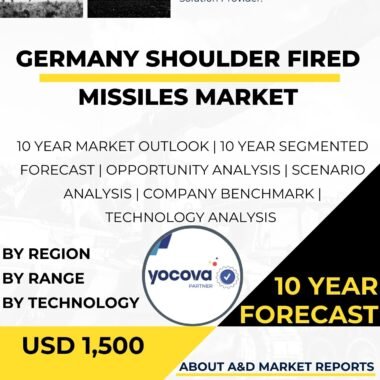Description
Singapore Shoulder Fired Missiles is an essential component of the country’s defense capabilities. As a small island nation with limited land space, Singapore places significant emphasis on its defense strategies to ensure territorial integrity and security. Shoulder-fired missiles, also known as man-portable air-defense systems (MANPADS), play a crucial role in the country’s defense posture, providing the Singapore Armed Forces (SAF) with enhanced anti-aircraft and anti-armor capabilities.
Shoulder-fired missiles are portable and lightweight missile systems designed to be operated by a single soldier. They are highly versatile and can engage various types of targets, including low-flying aircraft, helicopters, and armored vehicles. These missiles provide the SAF with a reliable and mobile defense against aerial threats and ground-based armored vehicles, adding flexibility and adaptability to their defense operations.
Singapore’s geographical location and proximity to potential threats necessitate a robust and flexible defense strategy. With limited airspace, the country needs efficient and precise air defense systems to safeguard its skies effectively. Shoulder-fired missiles serve as a critical layer of defense, especially in urban environments, where traditional air defense systems may be constrained by the surrounding buildings and infrastructure.
The Singapore Armed Forces maintain a comprehensive and modern inventory of shoulder-fired missile systems. These systems are regularly upgraded and augmented to keep up with evolving threats and technological advancements. The SAF’s approach to maintaining a state-of-the-art missile arsenal is a testament to the country’s commitment to ensuring the highest level of defense readiness.
The shoulder-fired missile market in Singapore is characterized by a combination of domestic capabilities and international collaborations. Singapore invests in the development and production of advanced missile systems through its domestic defense industry. Additionally, the country collaborates with reputable global defense manufacturers to acquire cutting-edge missile technologies and expertise.
Singapore’s defense industry, supported by the Defense Science and Technology Agency (DSTA) and local defense companies, plays a crucial role in developing and producing advanced shoulder-fired missile systems. This approach allows Singapore to customize its missile capabilities to suit its specific defense needs and tailor them to the unique challenges posed by its operating environment.
Moreover, Singapore’s participation in international defense exercises and joint training activities with other countries enhances its interoperability and proficiency in utilizing shoulder-fired missile systems. The country actively seeks opportunities to engage in defense cooperation and training exercises with its regional and international partners to enhance collective security and defense capabilities.
One of the key advantages of shoulder-fired missile systems is their mobility and ease of deployment. These systems can be rapidly transported and deployed by infantry units, providing them with a potent offensive and defensive capability during ground operations. The lightweight and man-portable nature of these missiles also allows for tactical flexibility, enabling soldiers to respond quickly to emerging threats on the battlefield.
The shoulder-fired missile market in Singapore is further driven by the need to counter asymmetric threats and unconventional warfare tactics. As modern military conflicts increasingly involve non-state actors and irregular warfare, shoulder-fired missiles offer an effective means to neutralize agile and small-scale threats that may be difficult to engage with larger, fixed-defense systems.
Singapore’s commitment to maintaining a robust and advanced missile arsenal is evident in its investment in research and development. The country actively pursues advancements in missile technologies, seeking to enhance the range, accuracy, and effectiveness of its shoulder-fired missile systems. Additionally, Singapore focuses on developing missile countermeasure capabilities to protect its assets from potential missile threats.
Furthermore, the shoulder-fired missile market in Singapore is an essential driver of job creation and skills development. The domestic production and maintenance of missile systems contribute to the growth of the country’s defense industry, providing opportunities for engineers, technicians, and support staff.
Singapore’s defense procurement strategy ensures that its shoulder-fired missile systems are integrated into a comprehensive defense network. These systems are part of a layered approach to air defense, which includes other assets such as radar systems, surface-to-air missiles, and fighter aircraft. This multi-layered approach enhances the country’s ability to deter and counter potential airborne threats effectively.
In conclusion, the shoulder-fired missile market in Singapore is a critical component of the country’s defense capabilities. Shoulder-fired missiles provide the Singapore Armed Forces with enhanced anti-aircraft and anti-armor capabilities, ensuring territorial integrity and security. The country’s focus on domestic development, international collaborations, and continuous advancements in missile technologies reflects its commitment to maintaining a state-of-the-art missile arsenal. As Singapore faces evolving threats and challenges, its shoulder-fired missile systems remain a vital asset in safeguarding its skies and supporting its defense posture.




